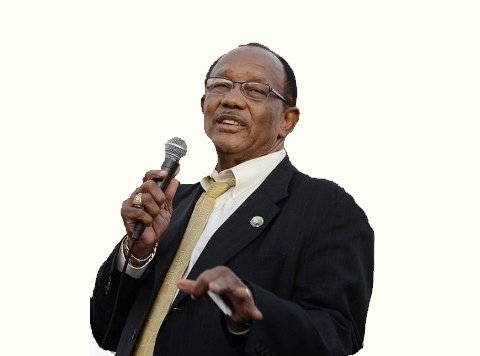Churches battling Selma’s ongoing problem — poverty
Free Press wire reports | 3/12/2015, 5:45 a.m.
SELMA, Ala.
The world’s eyes were again on this small Alabama city, the epicenter of the voting rights battle 50 years ago.
However, the crippling poverty that faith and community leaders grapple with daily was largely overlooked amid the commemoration of the long ago fight to end the exclusion of black people from the ballot box.
For those who live here, the big march and the powerful words of President Obama were a passing moment with little impact on conditions.
As Pastor Reginald Wells put it in considering the spotlight that Selma has been in, “We’re not benefiting. Oprah (Winfrey) was just here. They just filmed the movie ‘Selma’ here and the world is enjoying Selma” this weekend.
“What are we getting from it? Nothing. Nothing. Nothing,” the leader of the Holiness Temple Church of Christ in Prayer in Selma said. “We barely have a movie theater to show the movie in.”
In many ways, time has stood still in this community of 20,000 that was at the center of the push that culminated with the Voting Rights Act of 1965.
Ranked among Alabama’s poorest localities when the battle for voting rights was in full gear, Dallas County, of which Selma is the county seat, is still the poorest county in Alabama, with an unemployment rate of 12 percent, double the national average.
More than 40 percent of families and 67 percent of the children in Dallas County live below the poverty line. The median income of $22,000 is half the state’s average of $43,000, the violent crime rate is five times the state average and the high school dropout rate is nearly two times higher than the state average of 20 percent.
“Selma sowed, but it did not reap,” says James Perkins Jr., who became the first African-American mayor in 2000 of a city with an 80 percent African-American population.
“So many of the benefits that went to other places in the South, and around the world since the Voting Rights Act of 1965, did not come to Selma,” said Mr. Perkins, who served as mayor until 2008.
There are efforts to address this situation. Circles of Transformation is a new collaboration of churches and civic groups in Selma that is seeking to fight poverty by connecting families and working with the Chamber of Commerce to promote new enterprises.
“Our goal is to offer hope and uplift to help people change their condition,” said Donna Long, executive director of the Dallas County Family Resource Center, which oversees Circles of Transformation.
The area also is relatively rich in educational resources. Concordia College, Selma University and a state community college are located in the Black Belt city designated as the “Butterfly Capital of Alabama.”
However, the area’s economy has never really recovered from the closure of Craig Air Force Base in 1977. The base housed about 2,500 people and pumped tens of millions of dollars annually into the local economy.
The evidence of the impact can be seen in the city’s downtown, which sits along the Alabama River. From afar, the city center has a bucolic charm. But up close, this area is pocked with as many vacant buildings as occupied ones.
The Rev. Jesse Jackson Sr., who took part in the commemoration of the Selma marches, considered as symbolic the old home of Amelia Boynton Robinson, who played a key role in the 1965 marches.
The home where Dr. Martin Luther King Jr. and other civil rights leaders gathered to strategize for the marches, now sits boarded up, indistinguishable from the many other vacant houses in that neighborhood.
“We really should be focused on protest rather than celebration,” Rev. Jackson said, dismayed at the lack of progress in achieving the goals of the now celebrated Selma campaign — including the fight against poverty.







